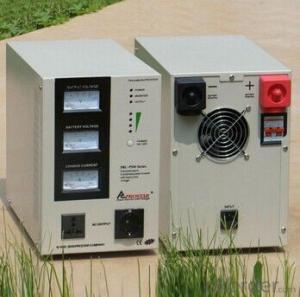Inverter Sine Wave Charger with Manual Bypass 5kW
- Loading Port:
- Tianjin
- Payment Terms:
- TT OR LC
- Min Order Qty:
- 10 pc
- Supply Capability:
- 10000 pc/month
OKorder Service Pledge
OKorder Financial Service
You Might Also Like
Specifications
Inverter sine wave charger
with AC input / output breaker
with Battery switch (breaker)
with manual bypass breaker
Automatic
5kW Inverter sine wave charger with manual bypass
Analogue meter display & digital meter display optional
Advantages
> Ultra-fast transfer time
From AC to DC less than 5ms, From DC to AC 0ms
(Routers, Switches PC, Servers and ATM machine will never re-start at Mains failure)
> Faster battery recharge time (Big charge current 30A~50A)
> Automatic tracking mains or generator input (Tracking input voltage, phase & frequency)
> AC / DC conversion waveform (Seamless connection without any spike)
> Battery equalization system (for longer battery life)
> Protection against short-circuit, low voltage, overload, over temperature and over-charge
> Low maintenance cost, Analogue meter & Digital meter Optional
Application range
Computer, Telecom, Deep Freezers, Air Conditioners, Petrol pump machines, Small Scale Industries Malls, Hotels, Restaurants, Banks, ATM Machines, Clinics, All kinds of Kitchen appliances & Home appliances, Weighing bridges,Elevators etc.
Technical specifications
| PRC-PSW SERIES | 500VA | 1000VA | 1500VA | 2000VA | 3000VA | 4000VA | 5000VA | 6250VA |
| BATTERY DC VOLTAGE | 12V | 12V/24V | 24V/48V | |||||
| INPUT AC RANGE | 160~280V / 45~55Hz | 165~260V / 45~55Hz | ||||||
| INVERTER OUTPUT | 220V ± 10% / 50Hz ± 1% | |||||||
| TRANSFER (AC LOSS) | 5ms after AC loss, automatic recovery after utility power back | |||||||
| FULL LOAD CAPACITY | 400W | 800W | 1200W | 1600W | 2400W | 3200W | 4000W | 5000W |
| WAVE DISTORTION | THD < 3% | |||||||
| OVER LOAD CAPACITY | 100% ~ 125% Keep Beeping; > 125% working 30s; >150% 1s shut down | |||||||
| OUTPUT SOCKET | 2outlets | 1outlet + terminal connectors | ||||||
| INDICATOR STATUS | Utility input with "POWER" & "BYPASS" light on | |||||||
| Utility power loss with "INVERTER" light on | ||||||||
| Connected with load "AC OUTPUT" light on | ||||||||
| Warning for battery low & over load with " ! " flashing | ||||||||
| Battery low protection, over load protection, short circuit protection with " ! " light on | ||||||||
| BATTERY CAPACITY | From top to bottom 4 indicator means 100%, 75%, 50%, 25% (" ! "Flashing) | |||||||
| CHARGE STATUS | Indicator flash change from 50% →75% → 100% every 1second means "CONSTANT CURRENT" | |||||||
| Indicator flash change from 50% →75% → 100% every 2second means "CONSTANT VOLTAGE" | ||||||||
| Indicator 50%/75%/100% 3lights on means "FLOAT CHARGE" & battery full | ||||||||
| CHARGE CURRENT | 15A | 20A | 30A/20A | 50A/30A | 70A/50A | |||
| Meter Display (OPTIONAL) | Analogue meter or Digital meter | |||||||
| RECHARGE TIME | 8~10hours | |||||||
| POWER EFFICIENCY | 80% at full load | 75% at full load | ||||||
| NOISE CONDITION | < 45dB | |||||||
| TEMPERATURE | —10°C ~ 40°C (Operation environment); —20°C ~ 50°C (Stock environment) | |||||||
| HUMIDITY | 0~95% no condensation | |||||||
| SIZE OF INVERTER | 420 x 230 x 350 mm | 500 x 280 x 430 mm | ||||||
| MEAS. AFTER PACKING | 45x26x38cm / unit | 53x31x46cm / unit | ||||||
| TYPE OF PACKAGING | Honeycomb carton | |||||||
| WEIGHT OF INVERTER | 11kg | 13kg | 16kg | 27kg | 29kg | 36kg | 38kg | 44kg |
| WEIGHT AFTER PACKAGING | 13kg | 15kg | 18kg | 29kg | 31kg | 38kg | 40kg | |

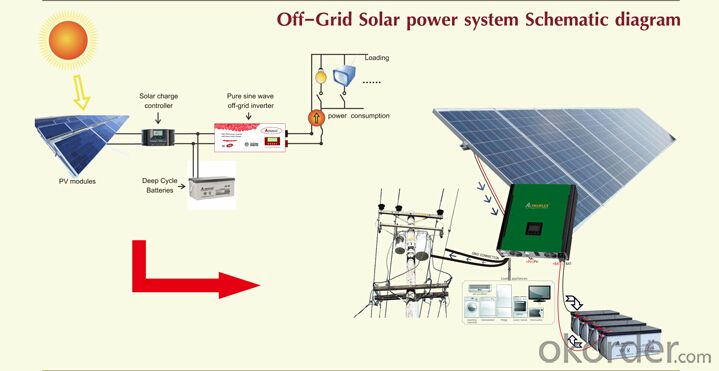

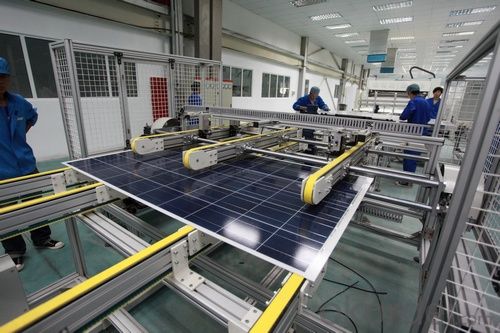
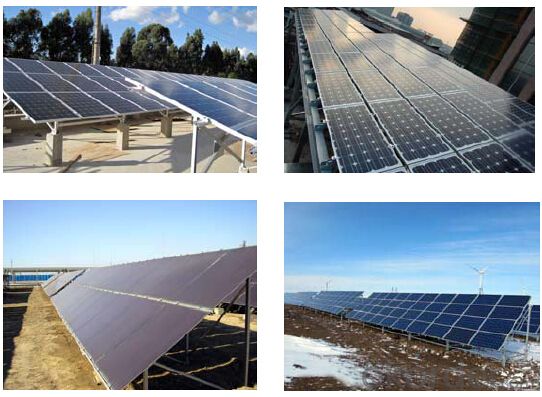
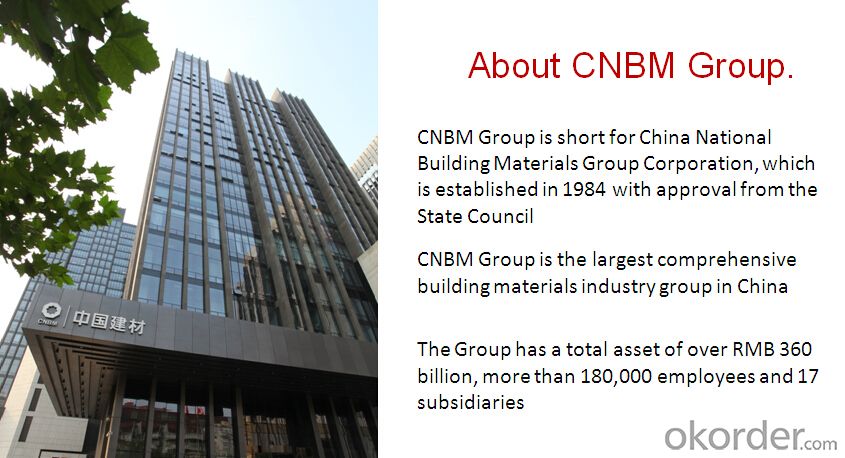

- Q:Can a solar inverter be used in areas with high seismic activity?
- Certainly, a solar inverter can be utilized in regions with high seismic activity. Nevertheless, it is imperative to guarantee that the solar inverter is engineered to endure and operate securely under such circumstances. Solar inverters are commonly constructed with sturdy and long-lasting materials to withstand a range of environmental factors, including seismic activity. They frequently undergo testing and certification to meet specific standards for seismic resistance. When installing a solar inverter in an area with high seismic activity, it is vital to adhere to the manufacturer's guidelines and recommendations. This may involve implementing additional measures such as reinforced mounting structures, flexible connections, and appropriate grounding techniques to enhance the stability and resilience of the inverter system. Furthermore, routine maintenance and inspections should be carried out to ensure that the solar inverter remains in optimal working condition even after seismic events. This entails examining for any indications of damage, loose connections, or other potential issues that may have arisen due to seismic activity. By taking necessary precautions and employing seismic-resistant solar inverters, it is plausible to safely and efficiently harness solar energy even in areas prone to seismic activity.
- Q:Are there any noise emissions from a solar inverter?
- Yes, solar inverters do produce some noise emissions. However, the noise levels are generally very low and often not noticeable, as the inverters are designed to operate quietly.
- Q:What is the maximum number of solar panels that a solar inverter can support?
- The maximum number of solar panels that a solar inverter can support depends on the specific model and capacity of the inverter. Different inverters have different power ratings and input capacities, which determine the number of solar panels they can handle. It is important to consult the manufacturer's specifications or consult with a professional to determine the appropriate number of panels that can be supported by a particular solar inverter.
- Q:What is the difference between a PV inverter and a solar inverter?
- Instability, the wind speed and the equipment itself will directly affect the generator rotation, so the voltage and current fluctuations, frequency instability, in short, is the power quality is poor) Therefore, through the inverter after the first rectification inverter to improve the quality of power
- Q:Can a solar inverter be used in low light conditions?
- Yes, a solar inverter can be used in low light conditions. However, the efficiency of the solar inverter decreases as the amount of available sunlight decreases. Therefore, it may not be as effective in converting solar energy into usable electricity in comparison to bright sunny conditions.
- Q:How does a solar inverter protect against overvoltage and overcurrent?
- A solar inverter protects against overvoltage by continuously monitoring the voltage levels of the solar panels and adjusting the conversion process to ensure that the output voltage remains within a safe range. In case of overvoltage, the inverter automatically reduces the power output or shuts down to prevent damage to the system. Similarly, the inverter safeguards against overcurrent by constantly monitoring the current flowing through the system. If the current exceeds the safe limits, the inverter utilizes protective measures such as reducing the power output, regulating the current, or triggering a shutdown to prevent any potential damage to the solar panels or connected devices.
- Q:Can a solar inverter be used with concentrated photovoltaic thermal systems?
- Yes, a solar inverter can be used with concentrated photovoltaic thermal (CPVT) systems. A solar inverter is used to convert the direct current (DC) generated by the CPVT system into alternating current (AC) that can be used to power electrical devices or be fed into the grid.
- Q:How does a solar inverter handle grid frequency deviations?
- A solar inverter handles grid frequency deviations by continuously monitoring the frequency of the grid and adjusting its output accordingly. If the grid frequency deviates from the set nominal frequency, the inverter uses its internal control algorithm to regulate the power output from the solar panels to match the grid frequency. This ensures that the inverter stays synchronized with the grid and helps maintain stability in the overall power system.
- Q:What are the key features to consider when purchasing a solar inverter?
- When purchasing a solar inverter, some key features to consider include the inverter's power rating, efficiency, type of inverter (string or micro), warranty, monitoring capabilities, and whether it has additional features like grid support or battery compatibility. These features play a vital role in determining the performance, reliability, and compatibility of the inverter with your solar system.
- Q:What is the role of a solar inverter in a grid-independent system?
- The role of a solar inverter in a grid-independent system is to convert the direct current (DC) generated by the solar panels into alternating current (AC) that can be used to power household appliances and other electrical loads. It also manages the flow of electricity between the solar panels, batteries (if present), and the electrical loads, ensuring optimal energy utilization and system efficiency. Additionally, a solar inverter in a grid-independent system may incorporate advanced features like battery charging and discharging control, voltage regulation, and monitoring capabilities to ensure the stability and reliability of the system.
1. Manufacturer Overview |
|
|---|---|
| Location | |
| Year Established | |
| Annual Output Value | |
| Main Markets | |
| Company Certifications | |
2. Manufacturer Certificates |
|
|---|---|
| a) Certification Name | |
| Range | |
| Reference | |
| Validity Period | |
3. Manufacturer Capability |
|
|---|---|
| a)Trade Capacity | |
| Nearest Port | |
| Export Percentage | |
| No.of Employees in Trade Department | |
| Language Spoken: | |
| b)Factory Information | |
| Factory Size: | |
| No. of Production Lines | |
| Contract Manufacturing | |
| Product Price Range | |
Send your message to us
Inverter Sine Wave Charger with Manual Bypass 5kW
- Loading Port:
- Tianjin
- Payment Terms:
- TT OR LC
- Min Order Qty:
- 10 pc
- Supply Capability:
- 10000 pc/month
OKorder Service Pledge
OKorder Financial Service
Similar products
New products
Hot products
Hot Searches
Related keywords
